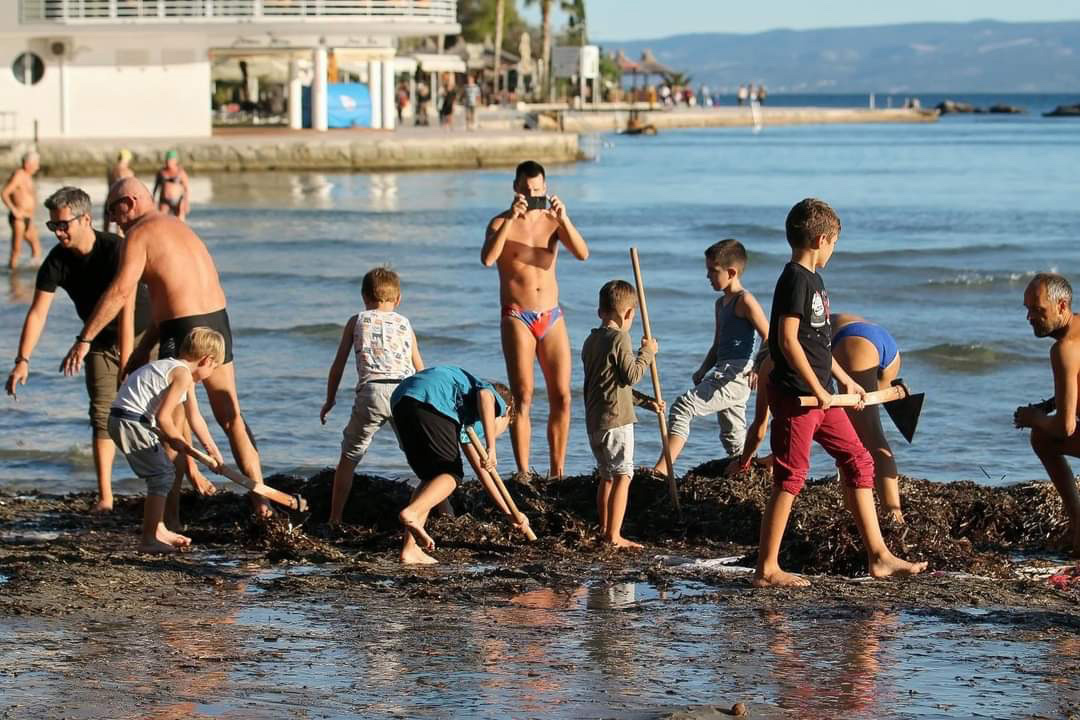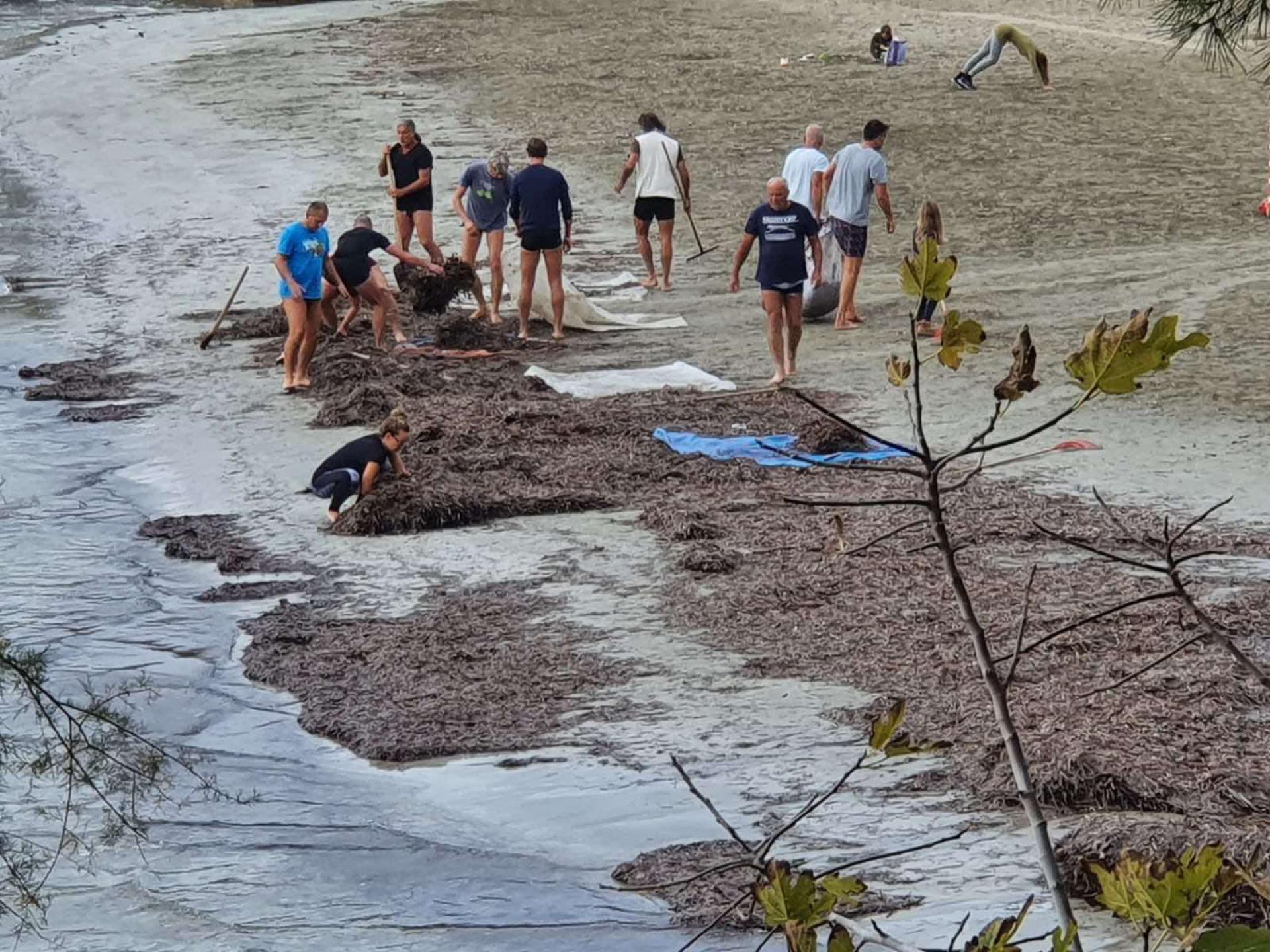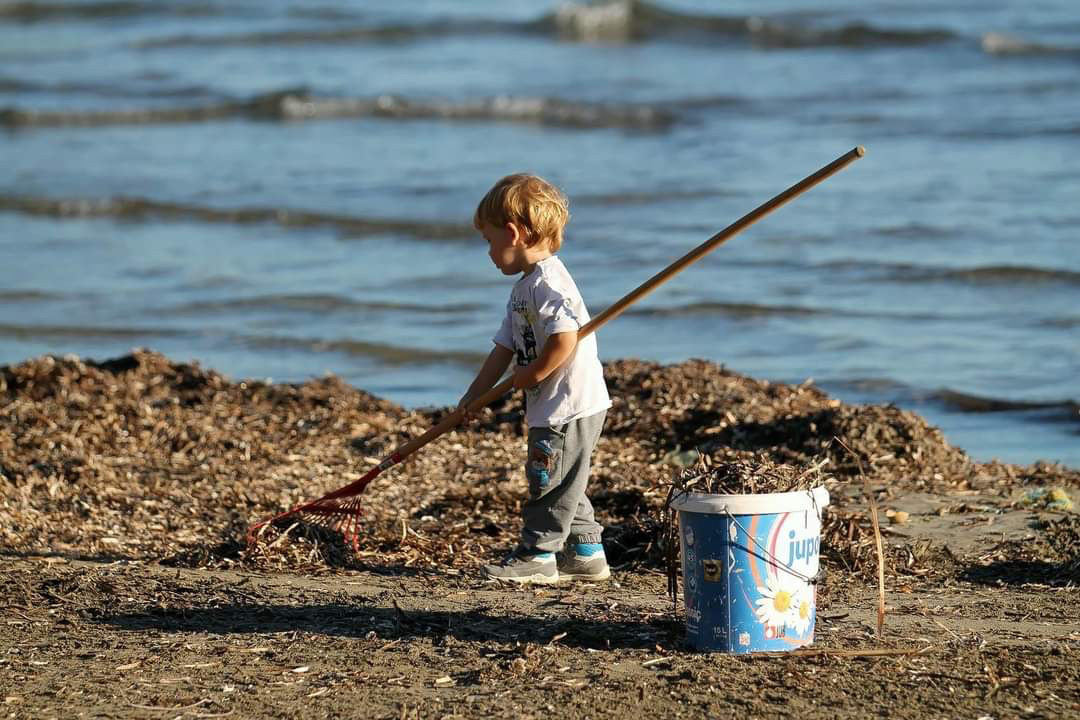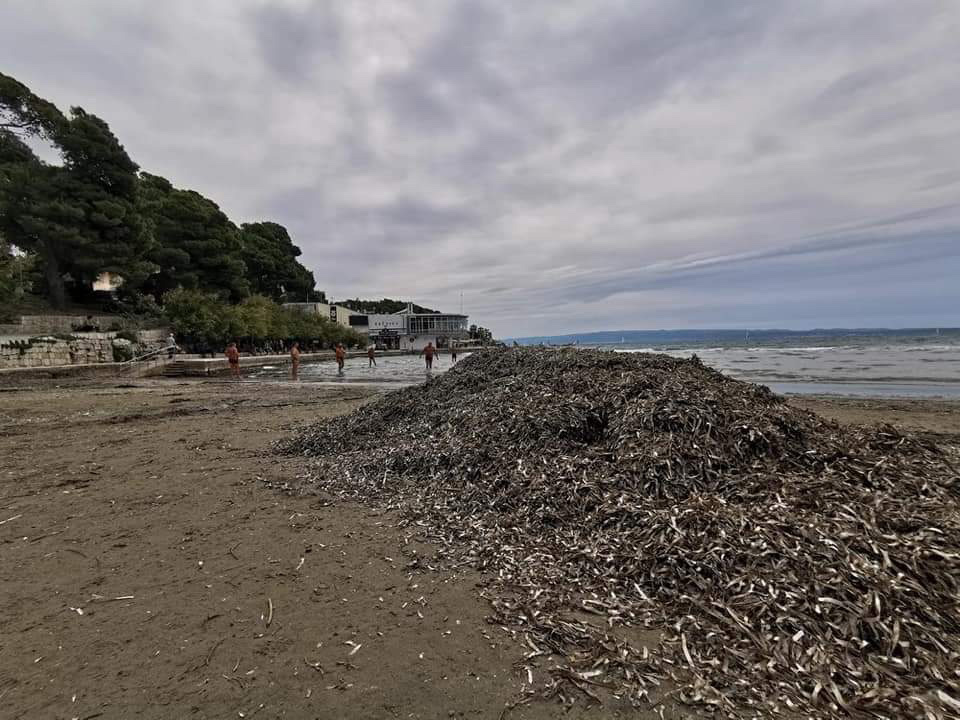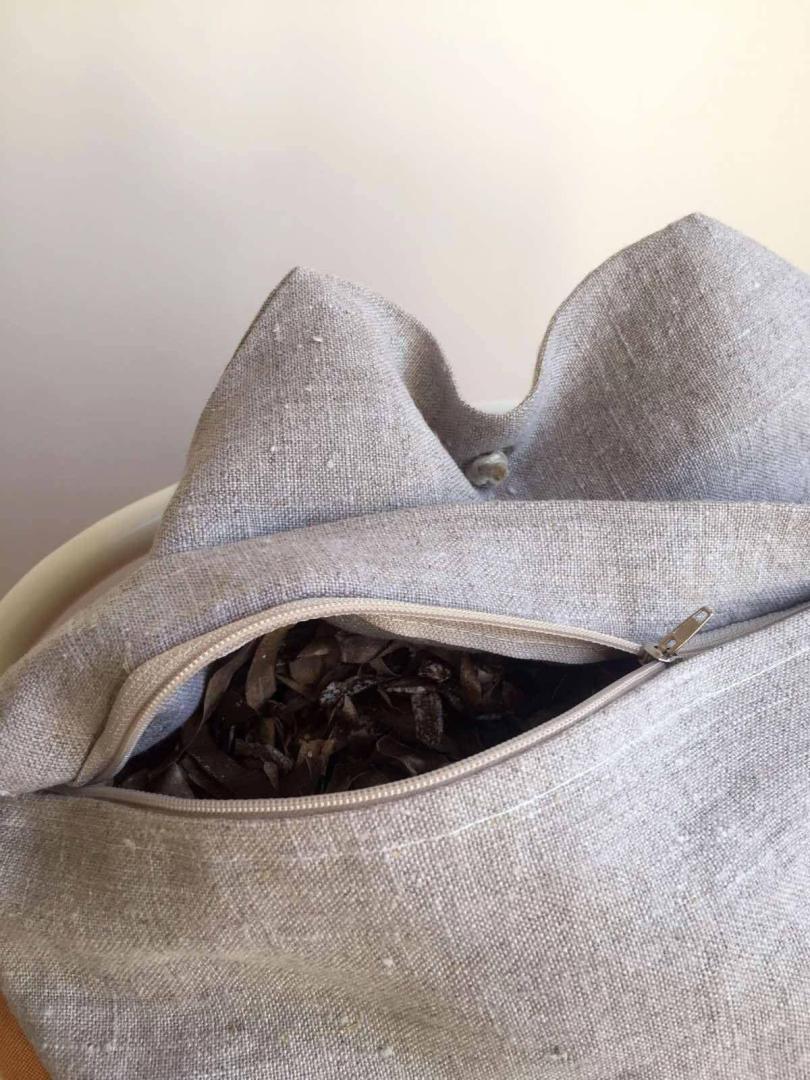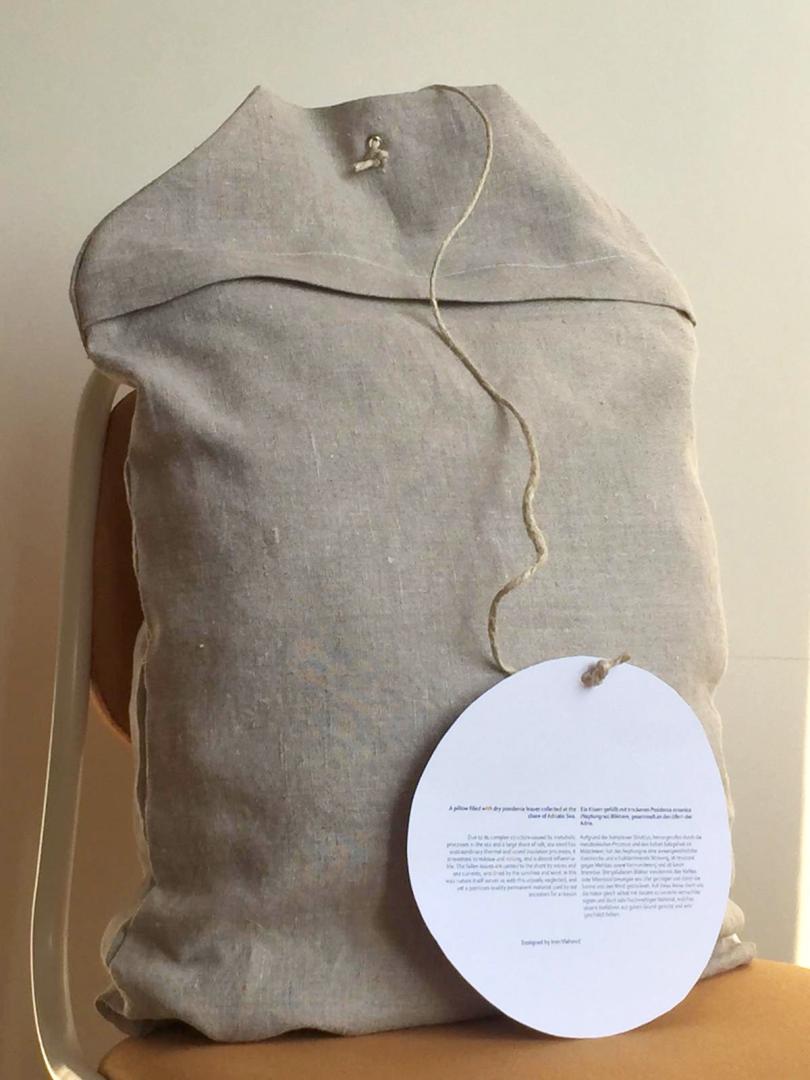What to Do with Seaweed?
Basic information
Project Title
Full project title
Category
Project Description
"Bačvice" Beach in Split is a well-known place where citizens socialize through various activities throughout the year, and is especially known for the cult game "picigin", which originated here. Several times during the year, the sea dumps large quantities of discarded seaweed on the beach. The “What to Do with Seaweed?” in cooperation with Ecological Society "Picigin Bačvice" organized the collecting of seaweed and applied it in local entrepreneurship.
Geographical Scope
Project Region
Urban or rural issues
Physical or other transformations
EU Programme or fund
Which funds
Description of the project
Summary
„What to Do with Seaweed?“ is a question with which the eponymous initiative was launched, and the whole project was developed over several years.The aim of the initiative is to support the local population in its care for the environment, and at the same time educate it about original, lasting values. It also encourages local entrepreneurs to use seaweed which is easily available locally and is a renewable material of very high quality and wide application which doesn’t harm the environment in any way and enriches lives in the whole ecosystem. "Bačvice" Beach in Split is a well-known place where citizens socialize through various activities throughout the year, and is especially known for the cult game "picigin", which originated here. Picigin is a social ball game performed in the shallows of sandy beaches, in which many players participate, regardless of gender and age. Several times during the year, the sea dumps large quantities of discarded seaweed on the beach, which "hinders" access to the shallows, especially for "picigin" players. Although a very valuable, sustainable material, it was considered as problem and was unfortunately taken to a landfill. The “What to Do with Seaweed?” initiative turned this "problem" into a benefit. In addition to the cooperation with the Ecological Society "Picigin Bačvice", which organized the collecting of seaweed, a survey was conducted to determine the application of seaweed in local entrepreneurship. By implementing the design and this valuable raw material throughout the entire project, an ecological product was produced that added value to business and quality of service of a local entrepreneur.This is just an example how we develop a culture of respect, recycling, reuse and reduction, and at the same time achieve environmental and economic goals. Because of the commercial use of the coast, seaweed is treated in an unacceptable way on many Mediterranean beaches.This initiative shows us how that can be changed.
Key objectives for sustainability
Posidonia Oceanica is endemic to the Mediterranean and also “the lungs of the Mediterranean” because it is one of the most important sources of oxygen provided to coastal waters.
The fallen leaves are carried to the shore by waves and sea currents, and dried by the sunshine and wind. In this way nature itself serves us with this unjustly neglected, and yet a premium quality permanent material.
Due to its complex structure caused by metabolic processes in the sea and a large share of salt, seaweed has extraordinary thermal and sound insulation performances, it is resistant to mildew and rotting, and is almost inflammable.
When compared with other natural fibres, seaweed is in a unique position as it is not produced by agricultural or forestry processes and is therefore not in competition for land space with food production. Furthermore, it is 100% organic and completely free of toxic matter. And this makes the material particularly interesting for those who suffer from allergies.
When collected in time, seaweed is a prepared raw material ready for further use. Involving the local community and entrepreneurs in the whole initiative created a circular economic process. The product is also designed to be manufactured on site with the goal of reducing transportation costs and pollution.
Our ancestors used this material for a reason. Confronting their knowledge with contemporary practices has resulted in an initiative that contributes to the entire community.
Key objectives for aesthetics and quality
Seaweed applied in designer products provides additional quality and a completely new experience to its users. Furthermore, it creates a completely natural surrounding not only in visual aspect but in terms of mood, scent, sound, cosiness, air-cool, humidity......
Thanks to the use of natural linen and raw seaweed, this product contains no additives. It is organic and completely free of toxic matter, this makes it particularly interesting for those who suffer from allergies.
The design of the product is based on reflection on universality, primarily with regard to the use of environmentally sustainable materials. The design of the pillow through its visual tells a story about fundamental values and simultaneously opens the possibility of a new look at the subject of contemporary living.
Since it is filled with completely natural, dry seaweed leaves with its rustle and scent of the sea, Pillow invites us to emotional interaction and contact with our primordial nature. The shape itself suggests a pillow experience as a place of contemplation, ritual, rest, and relaxation. To a modern man, it becomes an anchor in the grotto of everyday hustle and bustle.
Key objectives for inclusion
The goal of the whole project was to involve the local community in a project that would enrich and improve their lives. Seaweed is easily available here, which is why our ancestors often used it to fill mattresses, insulate houses, mulch, and even as a medicine. When needed, they would simply collect it from the shore. They lived in communion and in harmony with nature. “What to Do with Seaweed?” is a contemporary interpretation of the traditional way of life. With citizen cooperation, we create universal and accessible design stories for the good of the whole community.
Results in relation to category
The “What to Do with Seaweed?” initiative turned the "problem" with waste into a benefit. In addition to the cooperation with the Ecological Society "Picigin Bačvice", we organized the collection of seaweed. A survey was conducted to determine the application of seaweed in local entrepreneurship. By implementing the design and this valuable raw material throughout the entire project, an ecological product was produced that added value to business and quality of service for a local entrepreneur.
This methodology shows us how shaping a circular industrial ecosystem and supporting life-cycle thinking can lead us to achieve environmental and economic goals.
How Citizens benefit
"Bačvice" Beach in Split is a place where citizens, regardless of gender and age, socialize through various activities throughout the year.The beach should be regularly maintained and cleaned, not only from seaweed, but also from other garbage. Seaweed binds tiny plastics to itself, which is a growing problem in the entire ecosystem. “What to Do with Seaweed?” iInitiative has supported the citizens who stay on the beach every day in the action of collecting seaweed. By donating part of the money from the sale, we encourage their environmental activities and potential for extra profit. Participation has raised awareness of the values and possibilities of seaweed. By sustainable actions, the whole ecosystem becomes healthier and the economy more potent.
Physical or other transformations
Innovative character
“What to Do with Seaweed?” initiative has a good environmental impact. Comparing it to existing practices, the use of seaweed is an alternative which helps to ensure a clean and healthy ecosystem, at the same time bringing clear benefits to the local communities and entrepreneurship.
Seaweed applied in designer products provides additional quality and a completely new experience to its users. Furthermore, it creates a completely natural surrounding not only in visual aspect but in terms of mood, scent, sound, cosiness, air-cool, humidity......
Learning transferred to other parties
The main principles are: benefit for all, circularity, and sustainability.
The methodology consists of three guidances:
1. Collecting seaweed (Seaweed is collected by members of the Ecological Society "Picigin Bačvice" and prepared for use.)
2. Identifying application needs (A local entrepreneur orders and finances the production of a design solution and seaweed application.)
3. The design that connects them. (The designer coordinates the whole process and delivers the design solution.)
This is a concept that can be applied to many Mediterranean beaches. From waste to products with combined solutions.

